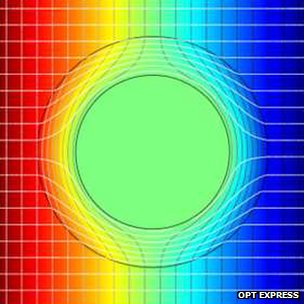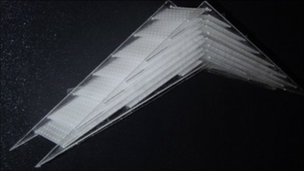November 14, 2012
In early November of 2012 Science and Technology reporter Jason Palmer for BBC News discusses the success of Duke Scientists and Center for Metamatrial members David Smith and Nathan Landy in "cloaking" an object perfectly for the first time, rendering a centimeter-scale cylinder invisible to microwaves.
In "Invisibility cloaking in 'perfect' demonstration" Palmer summarizes the emergence of invisibility cloaking, theorized by John Pendry of Imperial College London, David Schurig and David Smith in a 2006 publication in Science, and how the recent scientific breakthrough co-developed by Duke University's Smith group has modernized into a new field of transformation optics. Quoting from the article "Professor Pendry states 'The eventual outcome is going to be very far from what most people would think of as a cloak: something thin and flexible, which you can wrap around yourself and change its shape'".
Image

| Image

|
The feature "Invisibilty cloaks: Will we ever really have them?" highlights that behind most cloaking ideas is the use of metamaterials - materials whose properties are purposefully designed, defined not by chemistry but by the materials' size, shape and structure.
